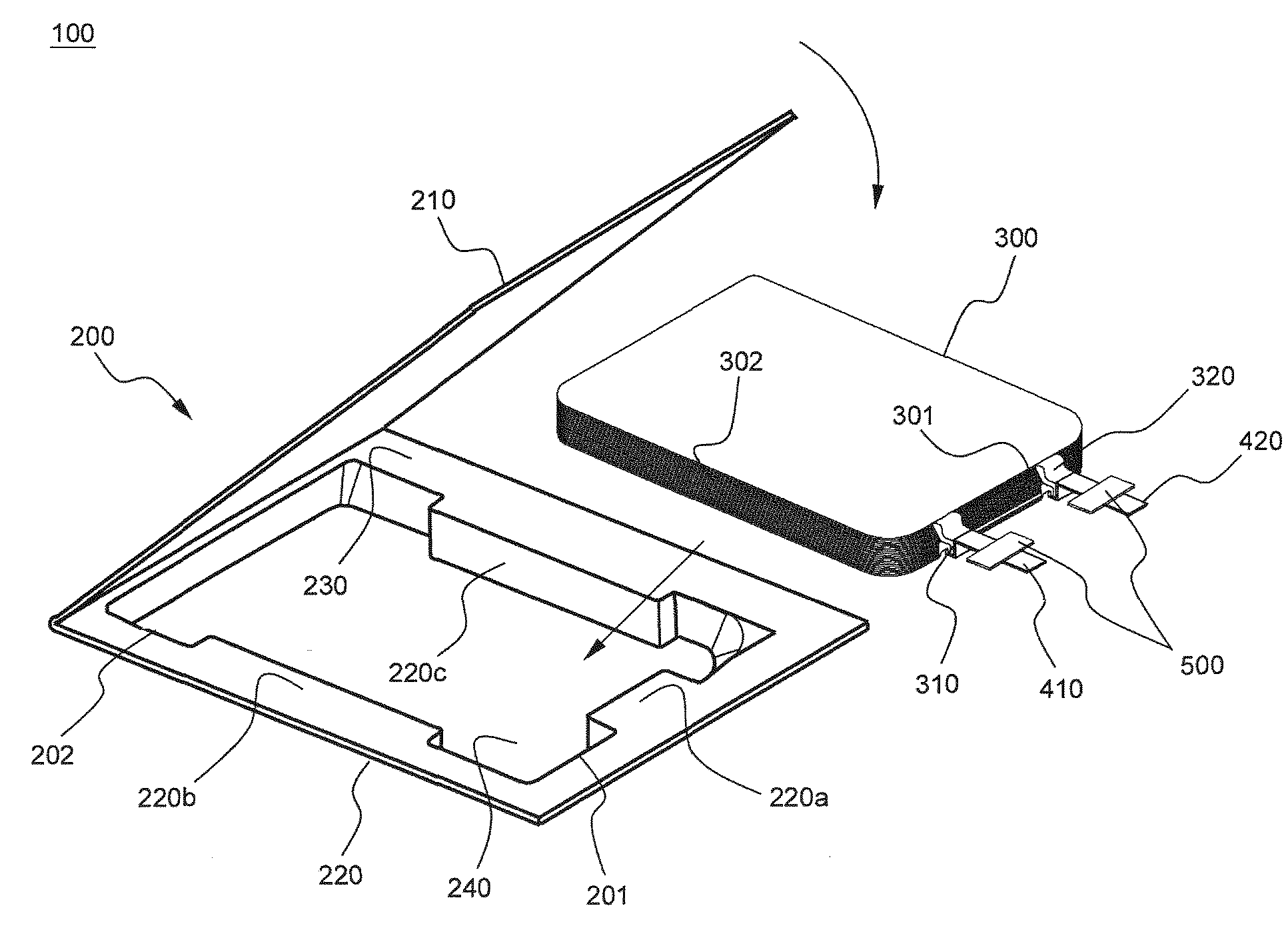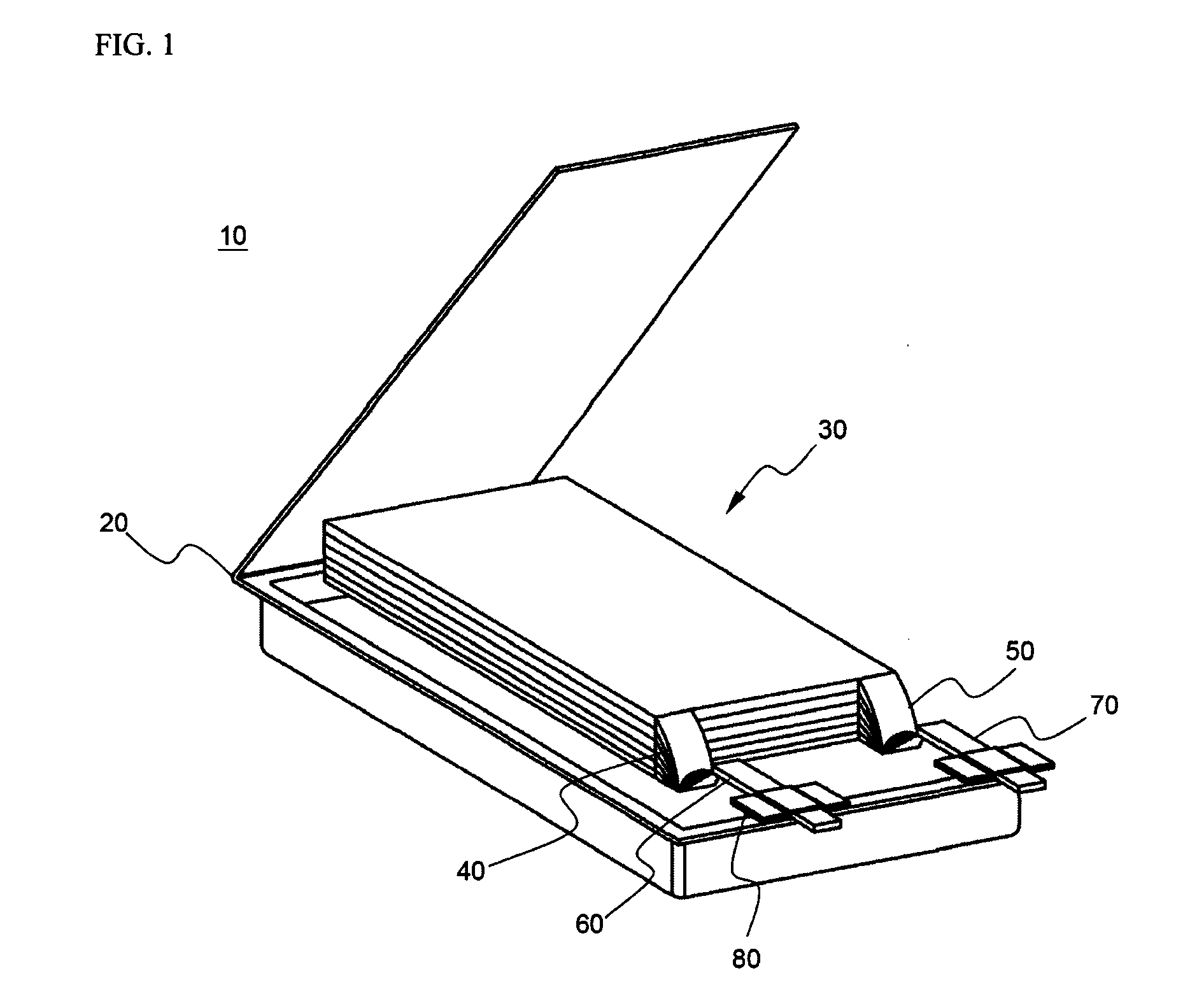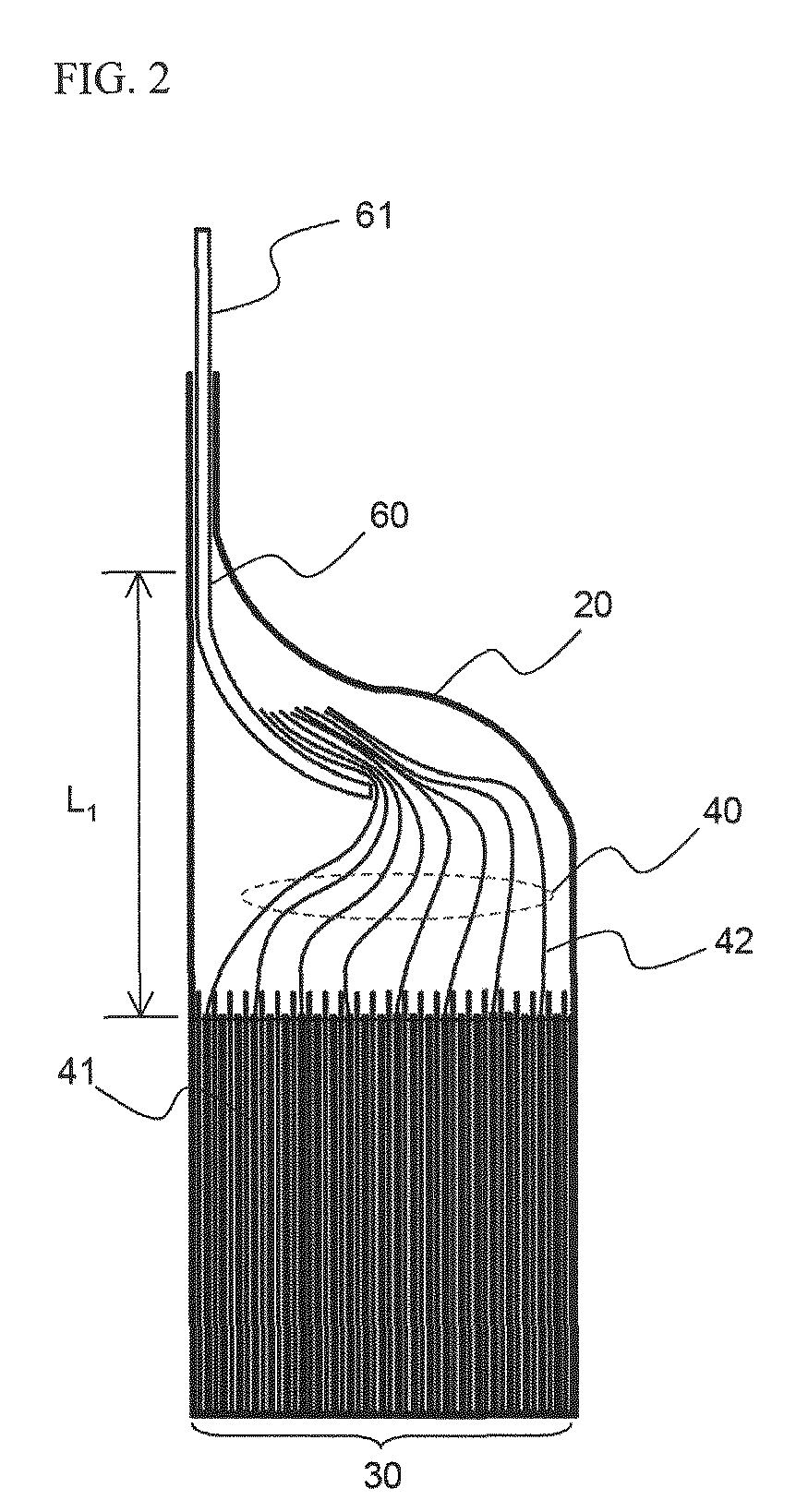Pouch-typed secondary battery with improved safety and excellent manufacturing process property
a manufacturing process and secondary battery technology, applied in the direction of cell components, final product manufacturing, sustainable manufacturing/processing, etc., can solve the problems of battery catching fire or explosion, thermal runaway phenomenon, etc., and achieve the effect of improving safety, stably maintaining and more stably fixing
- Summary
- Abstract
- Description
- Claims
- Application Information
AI Technical Summary
Benefits of technology
Problems solved by technology
Method used
Image
Examples
example 1
[0058]A cathode mixture slurry was prepared by adding 95 weight percent of lithium cobalt oxide as a cathode active material, 2.5 weight percent of a conducting agent, and 2.5 weight percent of a binder to N-methyl-2-pyrrolidone (NMP) as a solvent. An anode mixture slurry was prepared by adding 95 weight percent of artificial graphite as an anode active material, 1.5 weight percent of a conducting agent, and 3.5 weight percent of a binder to NMP as a solvent. The cathode mixture slurry was coated on an aluminum foil, and was then dried and pressed to manufacture cathodes. The anode mixture slurry was coated on a copper foil, and was then dried and pressed to manufacture anodes.
[0059]The cathodes and the anodes were stacked while separators were disposed between the cathodes and the anodes to manufacture cathode bicells and anode bicells. Subsequently, the bicells were sequentially stacked, while the bicells were arranged on a long separation film, to manufacture a stacking-folding t...
experimental example 1
[0061]Dropping experiments were carried out on the batteries manufactured according to Example 1 and Comparative example 1. The experiment results are indicated in Table 1 below. The dropping experiments were repeatedly carried out using 32 batteries for each example. In the dropping experiments, the batteries were freely dropped from a height of 1.5 m such that the upper end of each battery, at which the electrode tab-electrode lead coupling portions are formed, collided with the ground.
TABLE 1Number of batteries short-circuited after droppingExample 10Comparative example 18
[0062]As can be seen from Table 1 above, the experiment results revealed that all the batteries manufactured according to Example 1 were not short-circuited after the dropping experiments. Specifically, the electrode assembly was stably fixed by the concave steps formed at each battery case, with the result that the movement of the electrode assembly was restrained, in spite of the impact applied to each battery...
experimental example 2
[0063]Forcible moving experiments were carried out on the electrode assembly mounted in the respective battery cases manufactured according to Example 1 and Comparative example 1. The positional relations between the electrode assemblies and the corresponding battery cases before and after the experiments are illustrated in FIGS. 7 and 8. The distance between the electrode assemblies and the corresponding battery cases, before and after external impacts were applied to the batteries, is approximately indicated in the photographs.
[0064]Referring to FIGS. 7 and 8, the experiment results revealed that the side-to-side movement and the vertical movement of the electrode assembly was greatly reduced for the battery manufactured according to Example 1 as compared to the battery manufactured according to Comparative example 1. Specifically, when an impact was applied to the battery manufactured according to Comparative example 1, the distance between the electrode assembly and the battery ...
PUM
 Login to View More
Login to View More Abstract
Description
Claims
Application Information
 Login to View More
Login to View More - R&D
- Intellectual Property
- Life Sciences
- Materials
- Tech Scout
- Unparalleled Data Quality
- Higher Quality Content
- 60% Fewer Hallucinations
Browse by: Latest US Patents, China's latest patents, Technical Efficacy Thesaurus, Application Domain, Technology Topic, Popular Technical Reports.
© 2025 PatSnap. All rights reserved.Legal|Privacy policy|Modern Slavery Act Transparency Statement|Sitemap|About US| Contact US: help@patsnap.com



